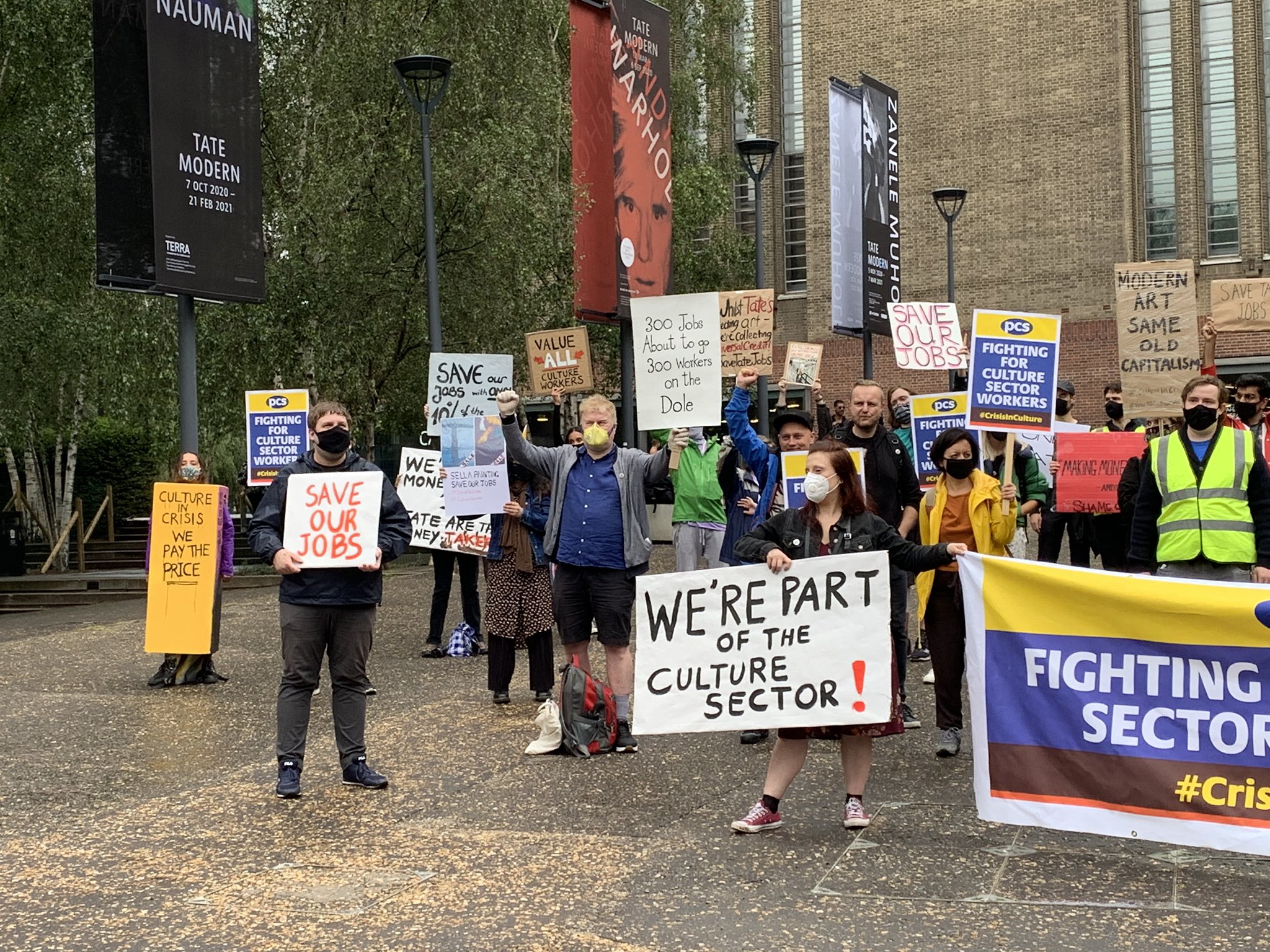
Protesters wearing masks gathered outside Tate Modern this morning in protest of the London gallery’s plan to cut some 200 jobs.
Demonstrators were out in force on Monday, July 27, as the London gallery reopened its doors to the public for the first time in four months, including members of the PCS union who work in the gallery’s commercial arm, Tate Enterprise, where some 200 commercial jobs from retail to publishing to catering, are at risk.
“Today’s protest shows our members’ determination to save jobs and protect a culturally iconic site,” the union’s general secretary Mark Serwotka tells Artnet News.
The gallery, which was widely praised for setting a good example in the beginning of the coronavirus crisis after committing to paying all of its commercial staff through the end of April is now planning to cut jobs, which unions and Black Lives Matter demonstrators say will disproportionately affect its Black and minority ethnic staff.
The PCS union, one of the UK’s largest trade unions, has asked that the gallery invest 10 percent of an anticipated £7 million ($9 million) government bailout to save these jobs. “This would be a good start in showing that Black lives, and Black and minority ethnic workers, truly matter to the Tate,” it said.
The union is currently balloting its members over whether to take strike action over the museums’ plans. In a statement, it says it hopes the protest actions draw attention to the massive job losses at Tate as well as other cultural institutions including Southbank Center, home to London’s Hayward Gallery, where some 400 job cuts are on the table.
The union’s general secretary says it will support its members whatever they decide to do, including a prolonged strike action. “It is staggering that after receiving a £7 million grant from the government, Tate has decided to treat loyal staff who support some of our country’s most important cultural sites, with redundancy,” Serworka says.
The union also says that the recent government announcement of a £1.57 billion ($2 billion) investment into the culture sector, while welcome, “falls woefully short of the needs of the sector.”